Biliary Tract: Biliary Cyst
Biliary Cysts
Basics
- Cystic Dilations of Intrahepatic or Extrahepatic Bile Ducts
- Previously Termed “Choledochal Cyst”
- Most Common in Females & Asians
- Risk for Malignancy
Causes
- Pancreatic Enzyme Reflux due to Anomalous Pancreaticobiliary Junction (ABPJ) During Development
- Long Common Channel Allows Free Reflux of Pancreatic Secretions into the Biliary Tract Which Causes Inflammation & Increased Pressure
- High Association
- Congenital
- Biliary Atresia
- Acquired – After Cholecystectomy or Sphincter of Oddi Dysfunction
Presentation
- Classic Triad: Abdominal Pain, Jaundice & RUQ Mass
- Rarely Occurs
- Sx:
- Abdominal Pain
- Cholelithiasis
- Jaundice
- Pancreatitis
- Early Satiety
- Cholangitis
- Palpable Abdominal Mass
Diagnosis
- MRCP – The Preferred Dx Test
- ERCP & Percutaneous Transhepatic Cholangiography – Most Sensitive but More Invasive
- Other Options: US or CT
Todani Classification (See Images Below)
- I: Extrahepatic (Fusiform/Saccular) – Most Common
- IA – Cystic Dilation
- IB – Focal Segment (Most Common at Distal CBD)
- IC – Fusiform Dilation of Entire Extrahepatic Biliary Tract
- II: Diverticula
- Not Associated with APBJ & Low Malignancy Risk
- III: Intraduodenal (Choledochocele)
- IV: Multiple – Second Most Common
- IVA – Both Intrahepatic & Extrahepatic
- IVB – All Extrahepatic
- V: Intrahepatic (Caroli’s Disease)
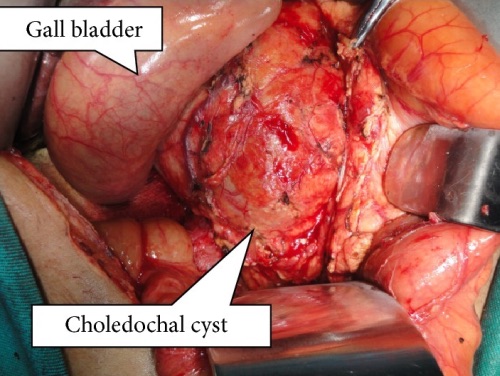
Biliary Cyst 1
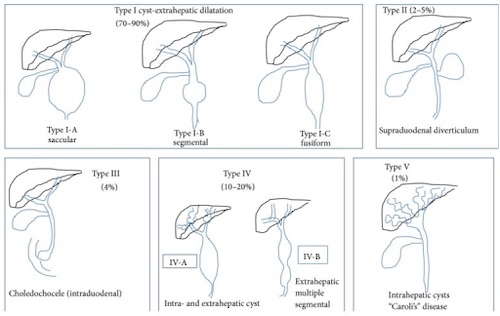
Todani Classification of Biliary Cysts 1
Treatment
- Class I: Resection & Roux-en-Y Hepaticojejunostomy Reconstruction
- Resection – Common Bile Duct through the Common Hepatic Duct (Divided Just Distal to the Confluence) & Cholecystectomy
- If Adherent to Portal Vein – Anterior Excision & Posterior Mucosectomy
- May Require Pancreaticoduodenectomy if Extending into the Head of the Pancreas
- Class II: Simple Diverticulectomy
- Class III:
- < 3 cm: ERCP (Marsupialization)
- > 3 cm: Surgery (Transduodenal Excision & Sphincteroplasty)
- Class IV:
- IVA: Partial Liver Resection & Roux-en-Y Hepaticojejunostomy Reconstruction
- Also Requires Extrahepatic Resection Similar to Type I/IVB
- Diffuse Intrahepatic Involvement May prevent Excision & May Require Liver TXP
- IVB: Resection & Roux-en-Y Hepaticojejunostomy Reconstruction
- Resection Similar to Type I – Common Bile Duct through the Common Hepatic Duct (Divided Just Distal to the Confluence) & Cholecystectomy
- IVA: Partial Liver Resection & Roux-en-Y Hepaticojejunostomy Reconstruction
- Class V: Supportive
- If Fails: Resection (If Able) vs Liver TXP
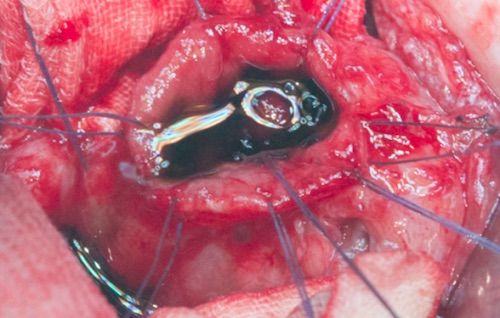
Choledochocele Marsupialization 2
Biliary Cyst – Todani Classification
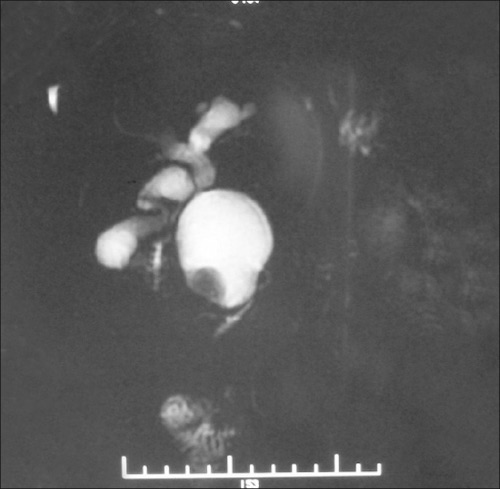
Biliary Cyst – Type Ia 3
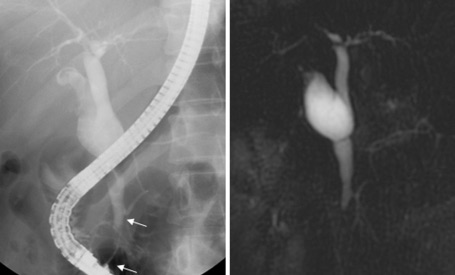
Biliary Cyst – Type Ib 4
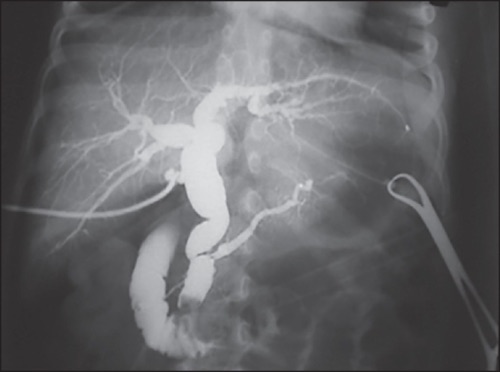
Biliary Cyst – Type Ic 5
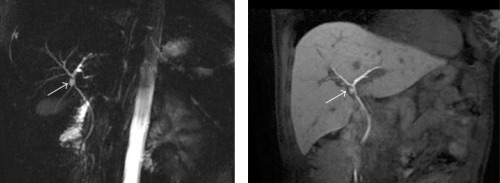
Biliary Cyst – Type II 6
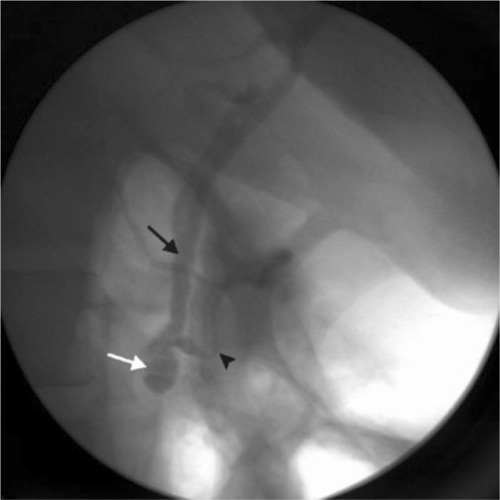
Biliary Cyst – Type III 7
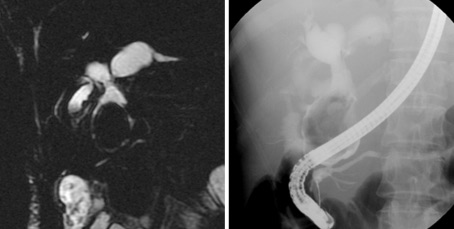
Biliary Cyst – Type IVa 4
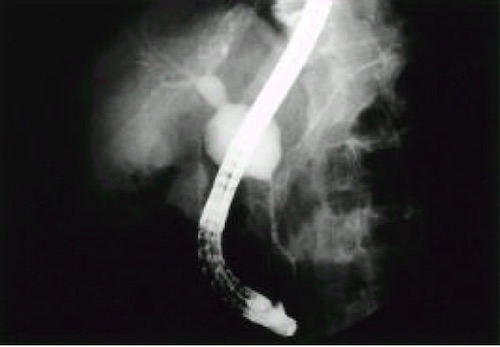
Biliary Cyst – Type IVb 8
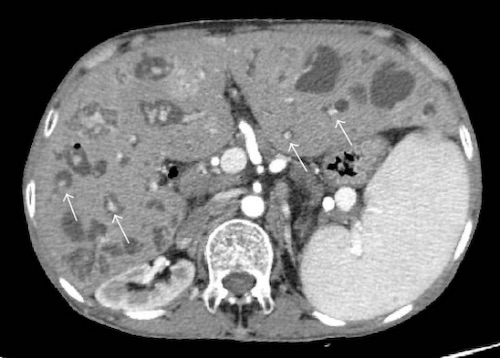
Biliary Cyst – Type V 9
References
- Machado NO, Chopra PJ, Al-Zadjali A, Younas S. Choledochal Cyst in Adults: Etiopathogenesis, Presentation, Management, and Outcome-Case Series and Review. Gastroenterol Res Pract. 2015;2015:602591. (License: CC BY-3.0)
- Zoetsch S, Singer G, Sorantin E, Flake AW, Till H. How to treat a neonate with duodenal atresia and intrapancreatic choledochocele causing persistent hyperbilirubinemia: A case report. Int J Surg Case Rep. 2016;19:11-3. (License: CC BY-NC-ND-4.0)
- Saha S, Gautam V, Andley M, Kumar A, Kumar A. Dilated biliary system. Type-1A choledochal cyst with cholalgocarcinoma. Saudi J Gastroenterol. 2012 May-Jun;18(3):223-4.(License: CC BY-NC-SA-3.0)
- Lee HK, Park SJ, Yi BH, Lee AL, Moon JH, Chang YW. Imaging features of adult choledochal cysts: a pictorial review. Korean J Radiol. 2009 Jan-Feb;10(1):71-80. (License: CC BY-NC-3.0)
- Jun Z, Shuli L, Zhen C, Zhen Z, Long L, Wei C. Combination of laparoscopy and endoscopy for fusiform choledochal cysts. J Minim Access Surg. 2016 Apr-Jun;12(2):93-7. (License: CC BY-NC-SA-3.0)
- Palmucci S, Roccasalva F, Piccoli M, Fuccio Sanzà G, Foti PV, Ragozzino A, Milone P, Ettorre GC. Contrast-Enhanced Magnetic Resonance Cholangiography: Practical Tips and Clinical Indications for Biliary Disease Management. Gastroenterol Res Pract. 2017;2017:2403012. (License: CC BY-4.0)
- Kaye E, Mixter S, Sheth K, Shaffer K. Choledochocele Presenting as Recurrent Pancreatitis. Radiol Case Rep. 2015 Nov 6;3(3):174. (License: CC BY-NC-ND-4.0)
- Song HK, Kim MH, Myung SJ, Lee SK, Kim HJ, Yoo KS, Seo DW, Lee HJ, Lim BC, Min YI. Choledochal cyst associated the with anomalous union of pancreaticobiliary duct (AUPBD) has a more grave clinical course than choledochal cyst alone. Korean J Intern Med. 1999 Jul;14(2):1-8. (License: CC BY-NC-3.0)
- Sato Y, Ren XS, Nakanuma Y. Caroli’s Disease: Current Knowledge of Its Biliary Pathogenesis Obtained from an Orthologous Rat Model. Int J Hepatol. 2012;2012:107945. (License: CC BY-3.0)